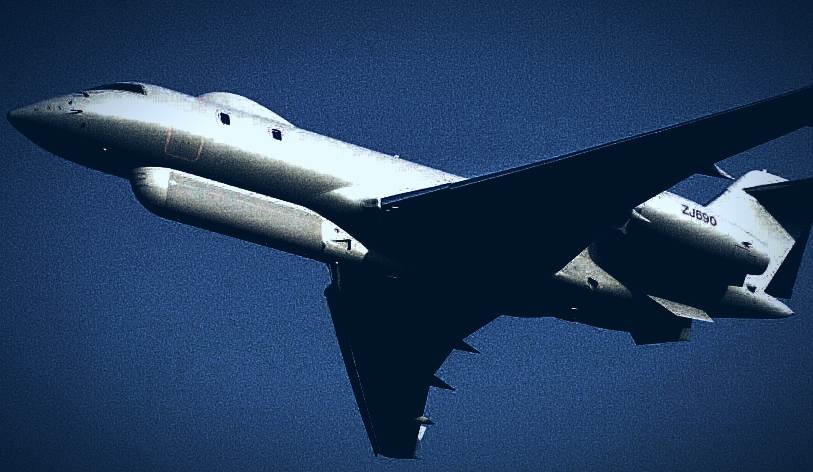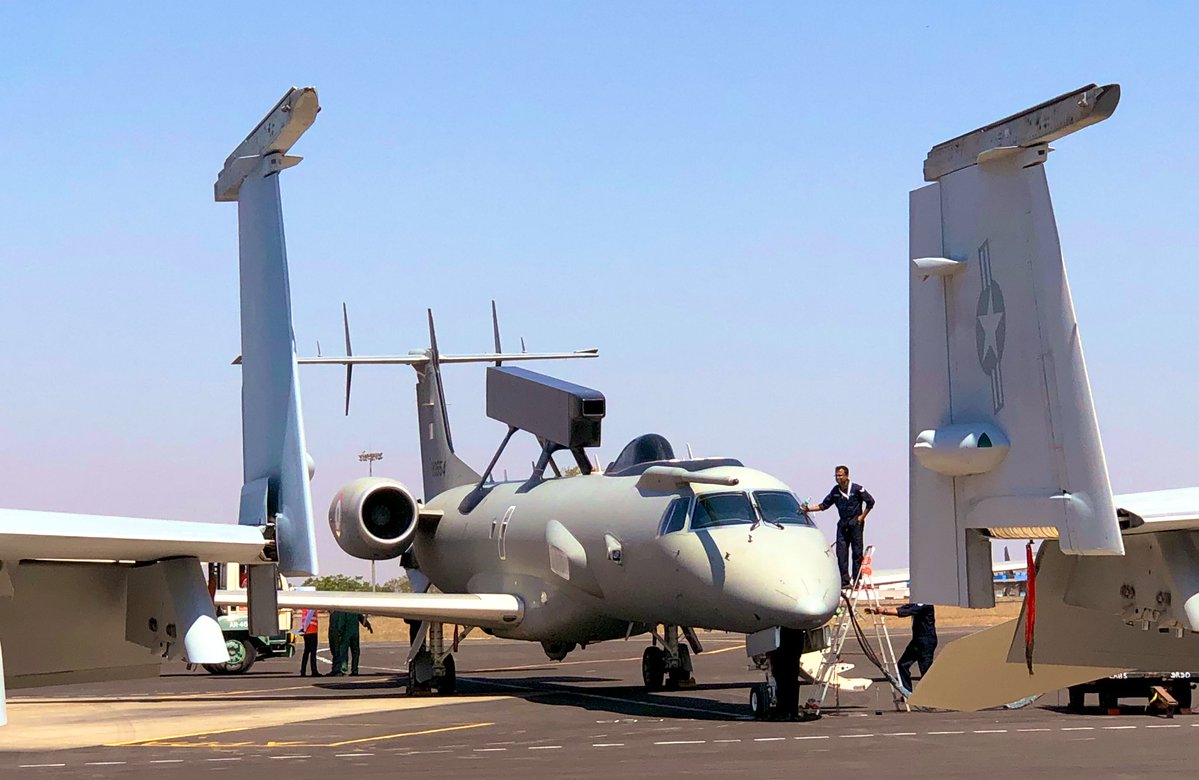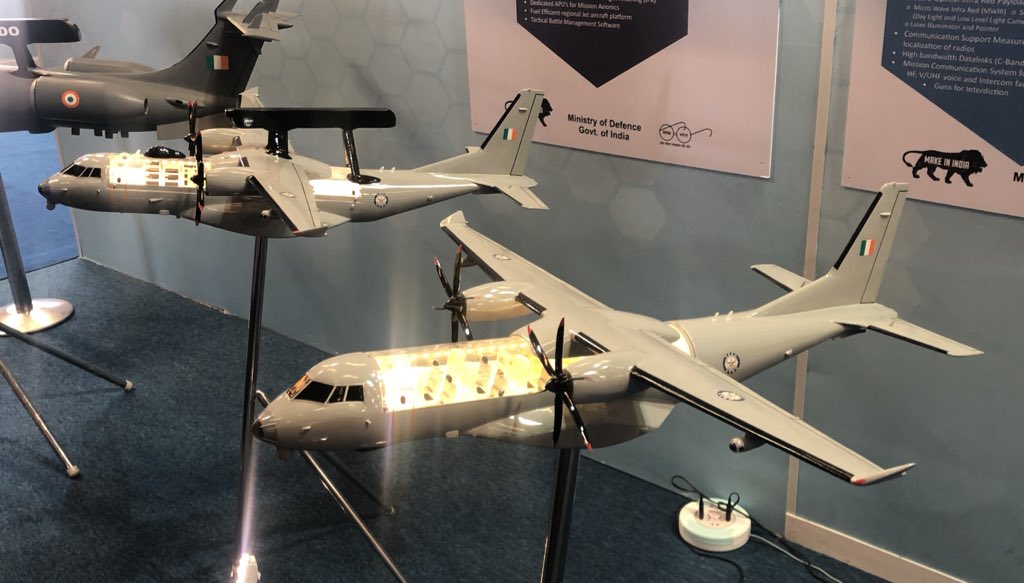
After India’s quest to acquire two Raytheon ISTAR advanced airborne battlefield and ground surveillance aircraft collapsed in 2017 over a preposterous — but not uncommon — turf war between the Indian Air Force and DRDO over testing and evaluation of the platform, things appear to be finally on track. Livefist has learnt that the ISTAR program has been resurrected under the auspices of the US-India defence technology & trade initiative (DTTI) and will see the Pentagon supply India with one ISTAR aircraft, while pooling technological resources for a joint effort with the DRDO to create indigenous sensor systems for an additional four aircraft.
In other words, India’s ISTAR acquisition plan has expanded from two aircraft off the shelf previously, to a total of five aircraft now, the last four of which will be integrated with Indian-developed intelligence sensors, avionics and network achitecture. The entire program is likely to cost over $3 billion.
Raytheon’s ISTAR platform, called Sentinel, is based on the long-range Bombardier Global Express jet, is in service with the Royal Air Force. The ISTAR capability has been seen for nearly a decade as crucial to India’s airborne networked surveillance, real time battle intelligence and target acquisition needs, a possible game-changer in an increasingly troubled neighbourhood.
U.S. Embassy sources confirmed that talks were on to freeze modalities of the actual transfer of the first aircraft. Livefist can also confirm that work has begun at the DRDO’s Centre for Airborne Systems (CABS) in Bengaluru on developing the sensors, software, communication equipment and code for the indigenous component of the program, with teams from the U.S. and India to exchange information under the DTTI to take things forward. This is likely to take a few years, given the complexity and sensitivity of the technology involved.
It is not clear if the DRDO and Indian Air Force have worked out their turf battle on testing and evaluation of the ISTAR, though it appears that both have laid down the contours of how it will work going forward. The significance of the requirement is understood to have been a compelling factor in the DRDO and IAF apparently setting aside their differences to make things move.
Apart from airborne intelligence aircraft operated by India’s Research & Analysis Wing (RAW), the Indian Air Force currently operates three Phalcon AWACS (with two more to be contracted) and a single DRDO-Embraer Netra AEW&C jet (a second jet joins service soon). The DRDO is also developing an AWACS system based on the Airbus A330 widebody jet platform, which, as Livefist reported here last year, the IAF wants to double as a mid-air tanker. At the ongoing Aero India show, Boeing reminder the IAF that the Wedgetail AEW&C was still on offer to it. In 2017, the IAF revived a quest for seven SIGINT/COMINT aircraft that will be administered by India’s intelligence agencies.

With the Netra AEW&C program now officially closed, the DRDO has focused its experience and energies on the Multimission Maritime Aircraft (MMMA) for the Indian Coast Guard, a project revealed first here on Livefist. That program is inadvertently stuck, since it is based on the Airbus C295 platform. And until the Indian government takes a decision on the Airbus-Tata proposal to build 56 C295s in India to replace its old British Avro transport planes, the MMMA program has no choice but to complete its sensor hardware and await clarity on the aircraft platform. The DRDO foresees churning out at least 17 C295-based MMMAs.

U.S. firm Raytheon, which leads the ISTAR/Sentinel program has flown well under the radar for the last few years after a high profile start in the Indian market. Emerging one of India’s first American suppliers of military equipment in after the 1999 Kargil War (which itself came a year after the U.S. imposed sanctions following India’s nuclear tests), Raytheon began by supplying India with AN/TPQ-37 Firefinder weapon and artillery locating radars. It followed this with high profile campaigns for the Javelin anti-tank weapon and Patriot anti-missile system with partner Lockheed-Martin, neither of which ended in a contract. In 2013, Raytheon’s AIM-9X Sidewinder lost out to the MBDA ASRAAM to arm the IAF’s Jaguars. Raytheon-built military equipment will enter Indian service this year in the form of U.S. Army reserve AIM-92 Stinger air-to-air missiles on the IAF’s AH-64E Apache attack helicopters. The revived ISTAR program could mark Raytheon’s big play in the Indian security market.

Programmes like AWACS, C4ISTAR are the real force multipliers of the IAF. Acquiring 5 C4ISTAR aircrafts is a good move. Royal Air Force is going to retire half of their Sentinel fleet, so acquiring the retired jets should also be considered.
No, thanks, no retired crap for our country please. Grow up, India has changed, stop living off others junk
Along with the option of buying retired RAF Sentinels, the option of acquiring more P8I Poseidons with the option of Advanced Airborne Sensor should also be considered.
https://foxtrotalpha.jalopnik.com/exclusive-p-8-poseidon-flies-with-shadowy-radar-system-1562912667
https://nationalinterest.org/blog/buzz/us-navys-p-8-poseidon-patrol-plane-has-neat-feature-tracking-land-targets-51537
Can anyone shed light on the difference between a Raytheon IStar and an AWAC?